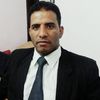Rise of Radical Movements in Yemen
Adel Doshela
Yemeni people share many things in common that unify them and create cohesion in the society. These things are derived from the Yemeni culture which is mainly rooted in Yemeni customs and traditions. This can be explained by Gramsci's perspective that culture can present a unifying tool in the society. Yemeni society has historically been very tribal and religious. There have not been religious or ideological differences. However, there was a simple difference between Zaydi Shiite and Salafi Sunnis. It is clear that Yemeni society belongs to these two sects.
It is extremely painful to see radical movements rule Yemen. These radical movement and traditional intellectuals do not understand that we live in 21 century. The phenomenon of radicalization is linked to several of factors including illiteracy; lack of public awareness, ignorance, political conflict, poverty and sectarian clash. Yemeni citizens became as strange men/women because of radical groups.
Furthermore, radical groups annoyed the life of Yemeni society and international community alike. It seems that International and regional conflict helped the sectarian movements to grow and spread in Yemen.
Radical movements have emerged early before the unification. However, after the unification, these movements raised and spread their ideology by force and ideological lectures in mosques and general places. Besides, these movements used religion to achieve their political aims.
In fact, the former regime supported the clash between the radical movements to save his power. For instance, it has supported the movement of al-Houthi to spread over the province of Sa’ada and some parts of Amran, Hajjah and Sana’a governorates. It encouraged the Houthi movement to attack Salfi and vice versa. The former regime used these movements to suppress the dissidents.
It is clear that the former regime ruled Yemen for many decades and created a great sense of paralysis within the nation and within the people themselves. This regime created even worse circumstances for people and deepened the sense of paralysis and inferiority in Yemen. However, we do not blame the former president alone. We blame the former regime in general. For many years, Yemeni people have lived under traditional and tribal regime.
Some people attack our religion and say that Islam is the source of radical movements. Instead of blaming our religion, culture, traditions, we should address a deep- rooted cause of the problem: illiteracy, poverty, ideology of foreign culture, ideology of violence, dictatorial regimes etc.
Radical groups believe in power and suppression. Antonio Gramsci (1891- 1937) assures that “hegemony should be based on consent and not coercion.” In Yemen most of college professors, activists and journalists are arrested by radical groups or traditional authority. How can we defeat radical movements while the majority of the Yemeni intellectuals are in prisons?!
The southern part of Yemen is under the control of Al-Qaeda and the northern part is ruled by radical militias. Yemenis completely lose their freedom and rights because of radical groups. These terrorist groups reject democracy and plurality. They want Yemeni nation to obey them by force. These terrorist acts led radical movements to commit horrible crimes against innocents.
In conclusion, International community and Gulf States have to side with the Yemeni people to defeat radical movements. Otherwise, these movements will spread in the region and the world alike.
Adel Doshela is a Yemeni researcher and freelance writer, currently writing his Ph. D. in English Literature. Follow him in tweeter: @DoshelaAdel
